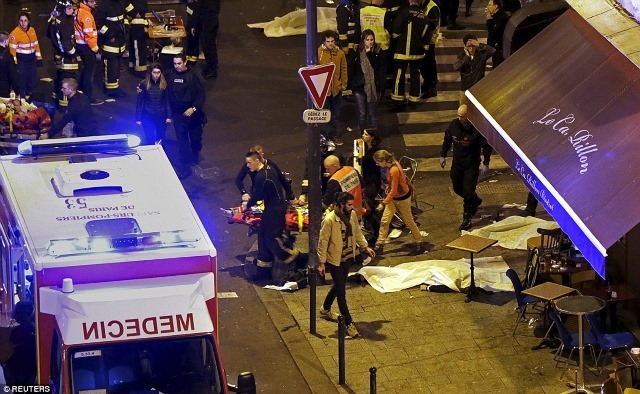
2015 has been one of the worst years in living memory for terrorism. It began with tragedy in Paris in January, and has ended the same way.
ANALYSIS: Ian StephenIt’s clear those who carried out the Paris attacks are utterly isolated from western society and have found belonging in the concepts of extremism.
If the initial reports are correct and these are young home-grown Jihadis, it’s clear we are a very long way from being anywhere near finding a solution.
Belonging to ISIS gives them the identity they crave and central to that is hatred of the West and everything it stands for.
It’s easy to whip them up into a frenzy and convince them martyrdom is their destiny.
It can happen in any community in any country.
The size of the task facing the west to break that cycle is enormous.
Ian Stephen is a forensic psychologist. ANALYSIS: Charlie WinterThis is a different kind of attack to the ones we have seen more recently from Islamic State-inspired people.
This would have taken a lot of planning.
There could be a lot more pressure on ISIS in Syria and Iraq but the overall goal of this is perception, putting itself at the front of the headlines.
All of those things are achieved through attacks like this.
What is clear is that these attackers had been trained. They moved very professionally and strategically.
The fact they had suicide vests is operationally unusual but it shows a high degree of sophistication.
It is indicative that this is more of an operation than a self-starter. Charlie Winter is a Senior Research Associate at Georgia State UniversityTimeline of terrorJanuary 7
Two heavily armed gunmen entered the Paris offices of satirical news magazine Charlie Hebdo and killed 12 people, including two police officers.
 January 9
January 9
Four people killed by a gunman in a kosher supermarket in Paris. A four-hour siege is ended by the police raiding the shop, killing the terrorist and freeing the hostages. January 16
Counter-terrorist units foiled what was described as a Jihadist plot to stage a major attack in the eastern Belgium town of Verviers. Two suspected terrorists, recently returned from fighting in Syria, are shot dead. February 14
A free-speech debate in a Copenhagen caf is targeted by a lone attacker who kills one spectator, injures three police officers, and then later kills a Jewish security guard outside the Danish capital’s Great Synagogue.
 (AP) June 26
(AP) June 26
Two attackers decapitated one person and blew up a gas canister in a factory near Lyon, France, in an attack which left a further 12 people injured. The attackers claimed association with an Islamist organisation, leaving a flag behind. One attacker was killed and the other arrested. July 1
38 people, including 30 Brits, are killed when a gunman runs amok on a beach in a Tunisian beach resort.
 July 20
July 20
A suicide bomber attacked a People’s Democratic Party protest in the Turkish town of Suruc. Thirty-two were killed with ISIS was suspected to be behind the bombing. August 21
A man opened fire with an assault rifle on a high speed train between Amsterdam and Paris. One person was shot in the neck but three American soldiers and a British man wrestled the Moroccan attacker to the floor and stopped the attack.
 October 10
October 10
Two suicide bombers blew themselves up near a train station in the Turkish capital Ankara where a rally for peace was taking place. The attack, blamed on ISIS, left 102 dead and 508 injured. October 31
A Russian plane with 224 people on board is blown up by a bomb shortly after taking off from the Egyptian resort of Sharm El-Sheikh. November 13
A series of attacks occurred simultaneously in central Paris leaving nearly 130 dead and scores more injured. France’s President Francois Hollande said the attacks were an “act of war” organised by ISIS.

Enjoy the convenience of having The Sunday Post delivered as a digital ePaper straight to your smartphone, tablet or computer.
Subscribe for only £5.49 a month and enjoy all the benefits of the printed paper as a digital replica.
Subscribe